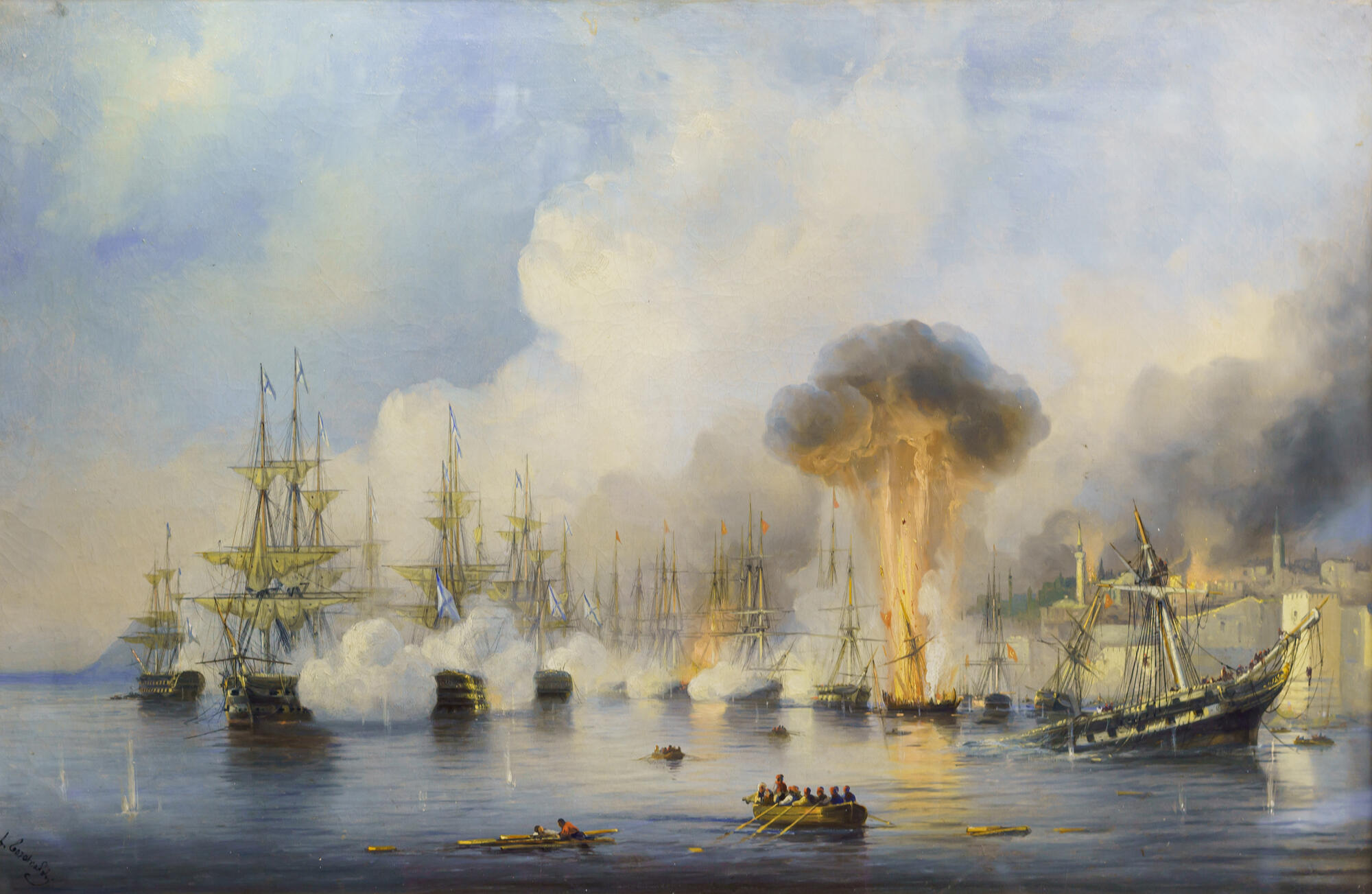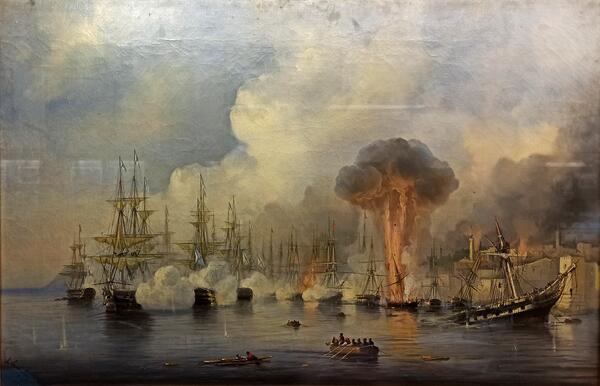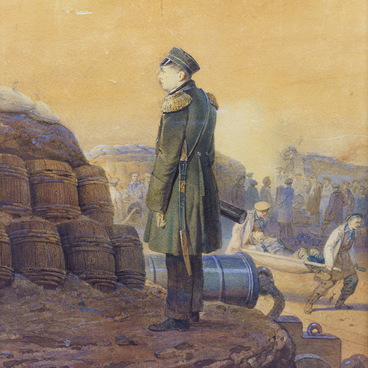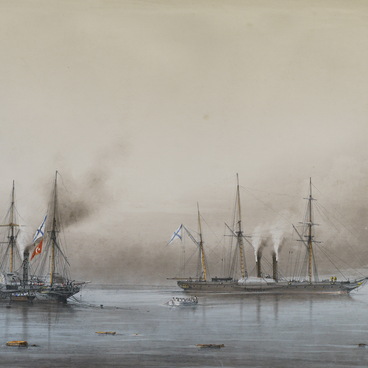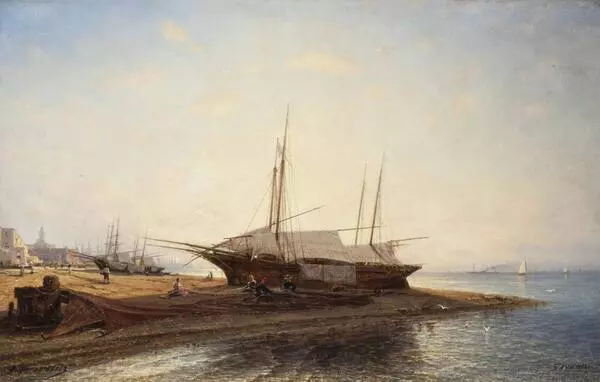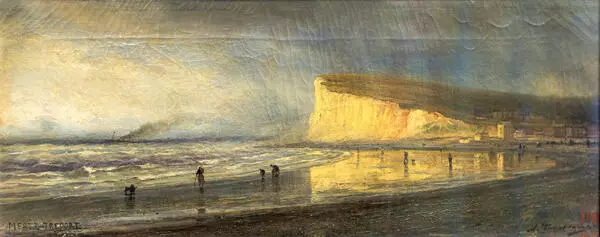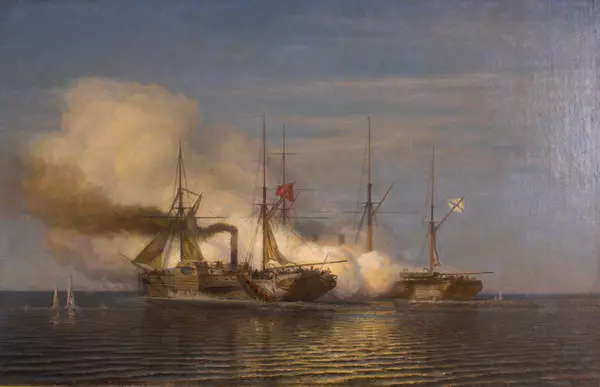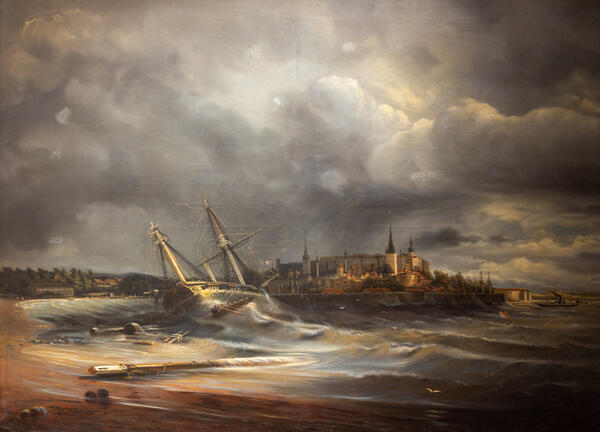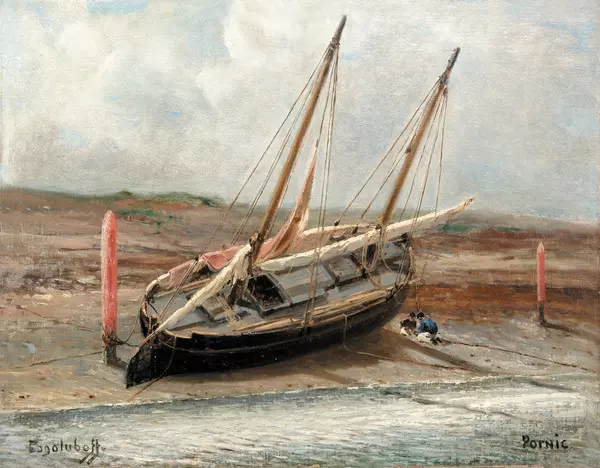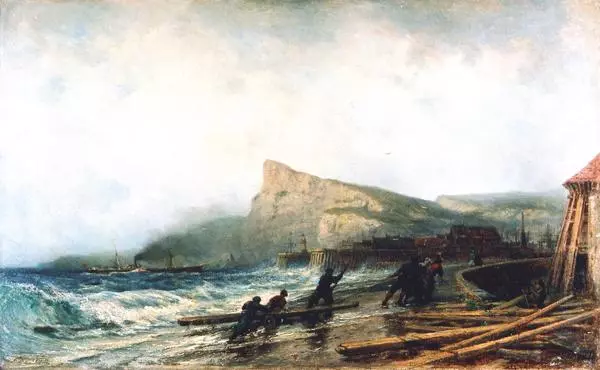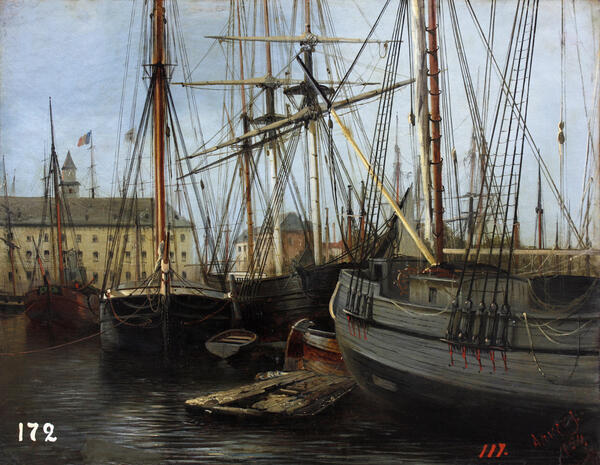The political tensions that resulted in the Crimean (Eastern) War of 1853–1856 kept rising over several months. They reached their climax in May 1853 when Russia and the Ottoman Empire cut off their diplomatic relations.
In October 1853, the Ottoman Empire declared war on Russia. Military action began at once in the Danube and Caucasus regions. The Danube campaign proved disastrous for Russia. The situation in the Caucasus was radically different. One of the largest Turkish naval bases was stationed in the Sinop harbor, and Vice Admiral Pavel Nakhimov decided to attack it. On November 18, 1853, the Turks and their English instructors — in total, fourteen ships of the line and two steamers — sheltered themselves from the weather in a safe harbor where they believed to be protected from any attacks. However, the Russian ships of the Black Sea squadron entered the harbor so fast that the coast artillery was not able to deter them. Fortunately for the Russian fleet, the location of enemy ships prevented the coast artillery from firing more actively early in the battle as they were afraid to hit their own vessels. Pavel Nakhimov’s flagship “Imperatritsa Maria” entered the harbor, stopped at a distance of 400 meters to the Ottoman flagship “Auni Allah” and fired. After that, other ships of the Russian squadron started exchanging fire with Ottoman ships. The Russian squadron managed to secure the victory thanks to the bravery of its sailors and the excellence of its officers.
Over four hours of battle, the Turks lost around fifteen ships and suffered over 3,000 casualties, while all their fortifications were destroyed. Only one vessel, the 20-gun steam frigate “Taif”, managed to escape the harbor. During the fighting, 37 Russians from Nakhimov’s squadron were killed, and 216 were wounded. Some of the ships suffered serious damage, but none were lost. It was the last major battle of the Age of Sail. After the victory in the Battle of Sinop, the Russian Fleet achieved full control over the Black Sea and disrupted the plans of the Turks who intended to land in the Caucasus.
In October 1853, the Ottoman Empire declared war on Russia. Military action began at once in the Danube and Caucasus regions. The Danube campaign proved disastrous for Russia. The situation in the Caucasus was radically different. One of the largest Turkish naval bases was stationed in the Sinop harbor, and Vice Admiral Pavel Nakhimov decided to attack it. On November 18, 1853, the Turks and their English instructors — in total, fourteen ships of the line and two steamers — sheltered themselves from the weather in a safe harbor where they believed to be protected from any attacks. However, the Russian ships of the Black Sea squadron entered the harbor so fast that the coast artillery was not able to deter them. Fortunately for the Russian fleet, the location of enemy ships prevented the coast artillery from firing more actively early in the battle as they were afraid to hit their own vessels. Pavel Nakhimov’s flagship “Imperatritsa Maria” entered the harbor, stopped at a distance of 400 meters to the Ottoman flagship “Auni Allah” and fired. After that, other ships of the Russian squadron started exchanging fire with Ottoman ships. The Russian squadron managed to secure the victory thanks to the bravery of its sailors and the excellence of its officers.
Over four hours of battle, the Turks lost around fifteen ships and suffered over 3,000 casualties, while all their fortifications were destroyed. Only one vessel, the 20-gun steam frigate “Taif”, managed to escape the harbor. During the fighting, 37 Russians from Nakhimov’s squadron were killed, and 216 were wounded. Some of the ships suffered serious damage, but none were lost. It was the last major battle of the Age of Sail. After the victory in the Battle of Sinop, the Russian Fleet achieved full control over the Black Sea and disrupted the plans of the Turks who intended to land in the Caucasus.
